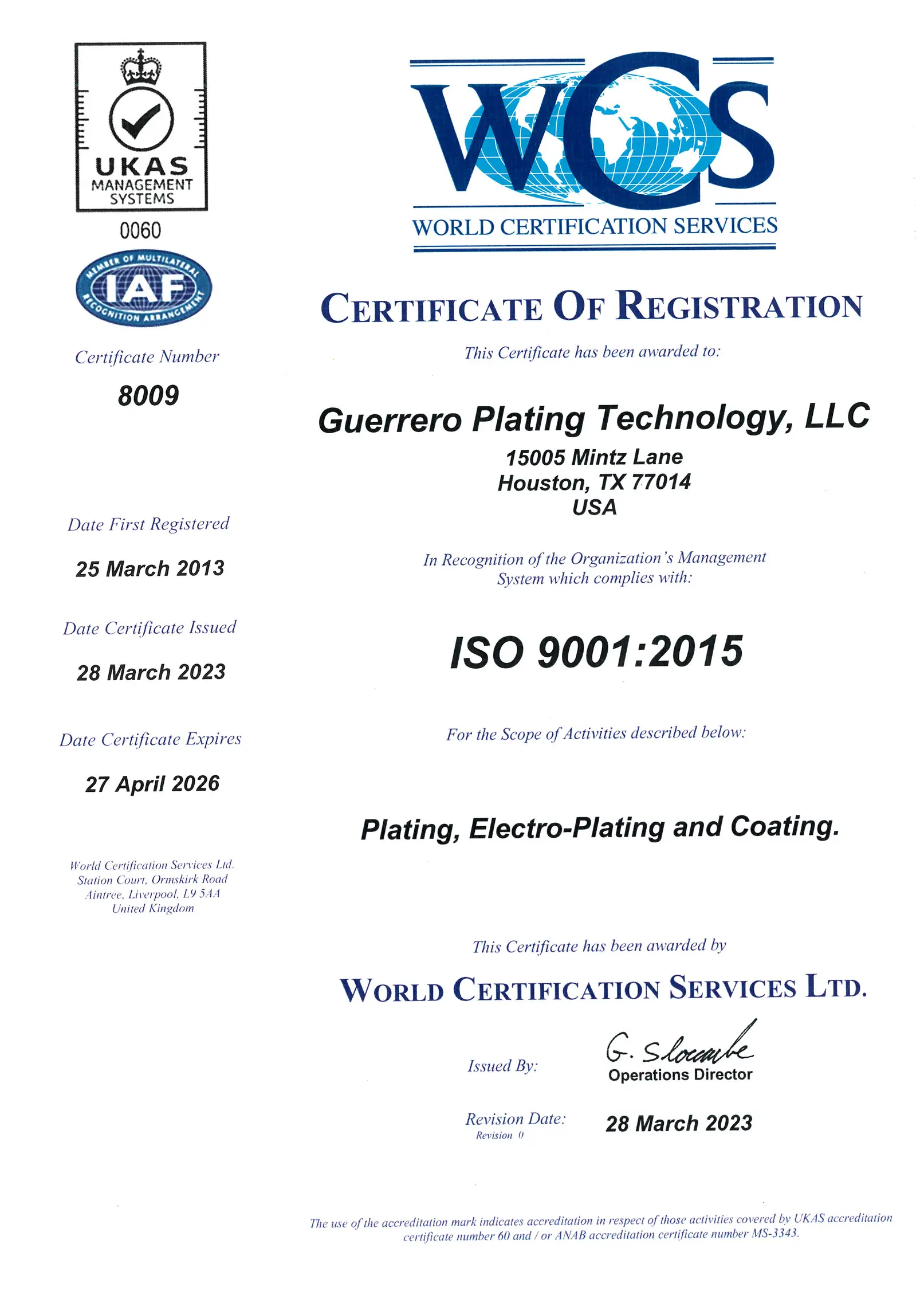What You Need to Know for Your Industrial Application
When it comes to industrial gold plating, one size does not fit all. Customizing gold plating thickness is essential for ensuring durability, performance, and functionality across various applications. This guide explores the critical factors influencing plating thickness, how it impacts component performance, and the potential challenges involved in the gold plating process.
Questions to Consider When Determining Gold Plating Thickness
What Are the Application-Specific Requirements?
The primary factor in determining gold plating thickness is the specific use case of the component. For example:
- High-Wear Components: Components like connectors that undergo repeated use (plugging and unplugging) require thicker gold plating for enhanced durability.
- Corrosion-Resistant Components: Components exposed to harsh environments or chemicals need thicker layers of gold to slow degradation and maintain corrosion resistance over time.
The thickness of gold plating directly correlates with a component’s performance. The thicker the plating, the more enhanced the properties of durability, corrosion resistance, and electrical conductivity.
Thicker layers are more wear-resistant, making them ideal for mechanical parts that encounter repeated friction. A thicker coating of gold also provides corrosion resistance for components that must withstand environmental factors like moisture, chemicals, and extreme temperatures. While gold is naturally an excellent conductor, its effectiveness can diminish with inadequate plating thickness, particularly for electronic connectors and terminals.
Guerrero Plating Technology partners with clients to begin each plating job with a full understanding of the application requirements of the part. We certify all of our gold plating work to the necessary standards, ASTM or military.
What Industries and Applications Require Gold Plating?
Gold-plated components are necessary across a wide range of industries. Gold plating applies to every industry using instruments with electrical conductivity, including oil and gas, electronics, aviation and aerospace, medical, and military. In particular, industrial gold plating is ideal for connectors and contacts.
What Industry Standards Must Be Met?
Both ASTM (American Society for Testing and Materials) and military standards provide clear guidelines for gold plating thickness:
- ASTM Standards: Often specified in microns, ASTM guidelines serve as a national benchmark for various industries.
- Military Standards: Expressed in microinches, these American standards ensure compliance with rigorous defense and aerospace requirements.
Most industrial gold plating falls within these specifications, with certifications provided to validate compliance. These industry standards guide the recommended thickness levels. The MIL-G-45204C & MIL-DTL-45204 standards classify thickness into:
- Class I: Minimum 50 microinches of gold, suitable for high-wear and high-reliability applications.
- Class 0: Minimum 30 microinches of gold
- Class 00: Minimum 20 microinches of gold, thinner layers for less demanding use cases.
At Guerrero Plating Technology, we use advanced X-ray machines to measure and certify gold plating thickness to the Class requirements, ensuring every component meets or exceeds industry standards.
Precision Matters: Certifying Gold Plating Thickness
Precision is critical in industrial gold plating, especially for clients who need guaranteed compliance with specifications. At Guerrero Plating Technology, we use state-of-the-art, calibrated X-ray machines to:
- Measure Thickness Accurately: Instead of estimating based on time or current, we provide exact readings.
- Provide Certifications: Clients receive detailed reports from our X-ray equipment, ensuring transparency and confidence in the quality of our work.
This rigorous approach not only ensures compliance but also builds trust with clients in industries like aerospace, defense, and academia.
Challenges and Limitations in Applying Gold Plating Layers
There are several challenges to consider when it comes to industrial gold plating:
- Cost of Gold: Gold’s price has risen significantly, from under $2,000 per ounce to over $3,000. This makes thicker layers more expensive, leading clients to carefully weigh the cost against performance needs.
- Size Limitations: Due to the high cost of gold, Guerrero’s plating baths are limited to 15 gallons, accommodating components with a maximum diameter of 15 inches. While this covers 99% of customer requests, larger items may require alternative solutions, which Guerrero will accommodate.
- Material Constraints: Gold plating adheres well to most metals, but materials like titanium, tungsten, and aluminum pose unique challenges. These metals naturally develop oxide layers that must be removed before plating. Guerrero uses a specialized bead-blasting process with glass media to prepare these surfaces, ensuring proper adhesion.
Looking for Precision Gold Plating?
Customizing gold plating thickness is vital for achieving optimal performance, durability, and compliance with industry standards. Whether your application involves high-wear connectors, precision aerospace components, or sensitive medical equipment, the right thickness can make all the difference.
At Guerrero Plating Technology, we combine expertise, advanced technology, and a commitment to quality to deliver gold plating solutions tailored to your needs. Our ability to handle challenging materials, provide precise measurements, and meet exacting standards sets us apart in the industry. If you’re looking to maximize the durability and performance of your components, contact Guerrero Plating Technology today.

